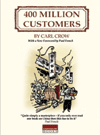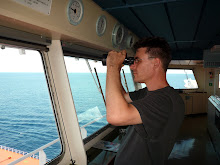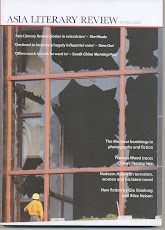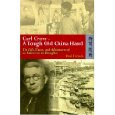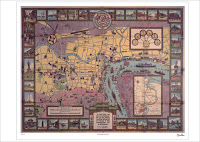
A few years ago to coincide with the publication of my biography of Carl Crow I issued a reprint of Carl's famous 1935 map of Shanghai. It proved pretty popular and so due to popular demand we've had some more printed. They're still RMB250 and if you're in Shanghai we'll send them round by courier. If you're anywhere else we'll simply convert RMB250 to your local currency and add the postage - you can then just pop us a cheque. Below are some details about the map. Anyone interested just email on
paul@accessasia.co.uk.
Carl Crow – Shanghai Municipal Council Shanghai Map – 1935
This illustrated full colour map of the city’s International Settlement was commissioned by the Shanghai Municipal Council (SMC) in 1935 to be provided to visitors to the city as a tourist guide. Carl Crow was hired to oversee the project and used local artist VV Kovalsky to draw the map. Crow added the sidebar comments on the “history, customs and points of interest in this cosmopolitan city of Shanghai”.
Carl Crow (1883-1945) was originally from Missouri and moved to Shanghai in 1911 to help found the English language China Press newspaper. Over the next few years he covered the collapse of the Qing Dynasty, the development of Shanghai and the establishment of the Nationalist government. He worked briefly in Tokyo before returning to Shanghai to found the famous Carl Crow Inc, an advertising agency.
Crow was a prolific journalist and writer for publications such as Liberty, The Saturday Evening Post, Pearson’s, McClure’s and the Reader’s Digest. His best selling books included the Handbook for China (that ran through 13 editions between the wars), his series of anecdotes of business life in inter-war China, 400 Million Customers and a portrait of the foreign communities of the China coast, Foreign Devils in the Flowery Kingdom.
After being evacuated from Shanghai in 1937 following the Japanese invasion of the city, Crow returned to America. However, he was soon back in war-torn China travelling up the Burma Road from Rangoon to Chongqing. Crow died in 1945 in New York City. During his quarter of a century in China Crow interviewed and grew to know most of the major characters in the country’s history including Sun Yat-sen, Chiang Kai-shek, Madam Chiang and Zhou En-lai.
VV Kovalsky was a White Russian émigré artist and cartographer who freelanced for various newspapers, periodicals and advertising agencies in Shanghai between the wars.
